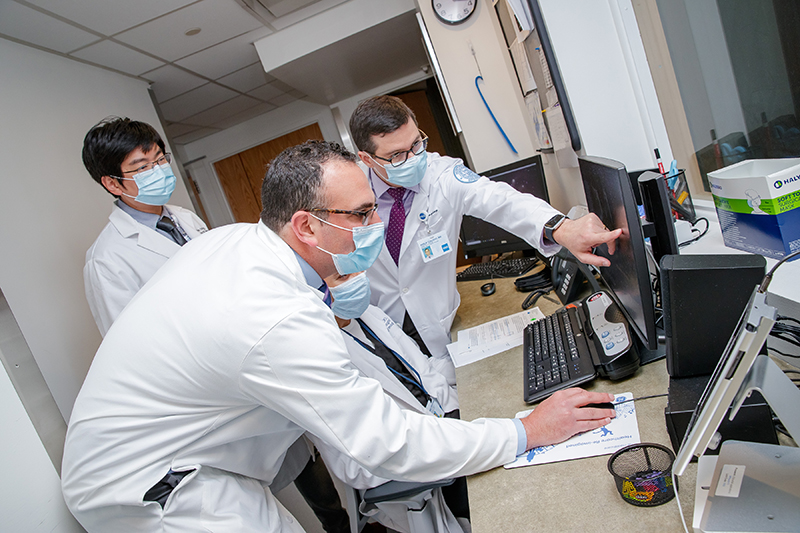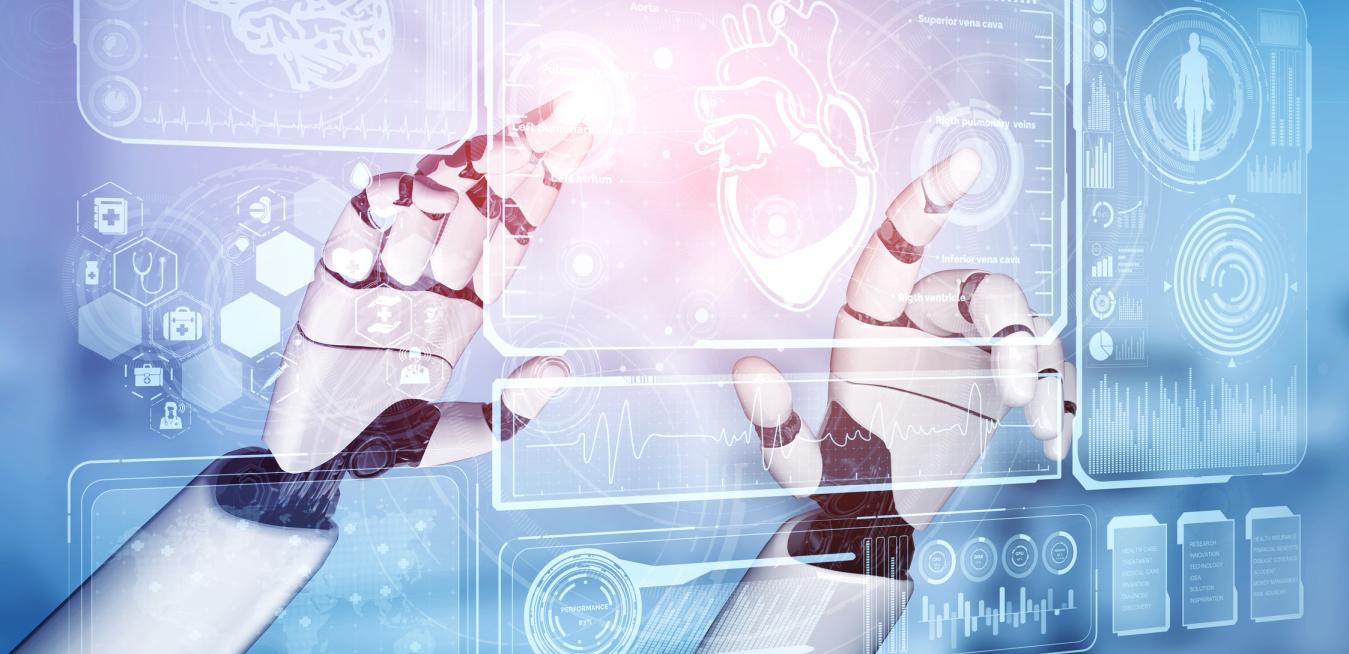The raging epidemic makes 2022 continue to be a difficult year for medical forces around the world. New technology is riding to the rescue for the world’s overburdened doctors, nurses and support staff. Clinicians are increasingly harnessing artificial intelligence (AI) — which works by gathering and analyzing mountains of data, and then churning out actionable insights — to lighten their workload. For example, AI-enhanced software can help reduce the steps involved in imaging a patient, quickly identify abnormalities in a scan, and manage the flow of patients to an emergency room or even perform surgical procedures yourself. Let's find out the top 4 artificial intelligence application technologies can bring relief to the world’s overloaded healthcare workforce.
Top and above illustrations credit: Getty Images.
An artificial-intelligence-powered robot performed a laparoscopic surgery on pigs with virtually no human intervention.
Autonomous robotic surgery would allow for certain challenging tasks to be “performed with more accuracy and precision in every patient independent of surgeon skill,” said Axel Krieger, an assistant professor of mechanical engineering at Johns Hopkins’s Whiting School of Engineering and senior author of a new paper in Science Robotics. “We hypothesize that this will result in a democratized surgical approach to patient care with more predictable and consistent patient outcomes.”
Kreiger’s team gave their Smart Tissue Autonomous Robot (STAR) a machine learning algorithm, enabling it to make adjustments while suturing soft tissue, which can be tricky and requires a high level of precision to stitch securely. Guided by a 3D endoscope, STAR accurately sewed up the small intestines of pig subjects. “Our findings show that we can automate one of the most intricate and delicate tasks in surgery: the reconnection of two ends of an intestine,” said Krieger. “The STAR performed the procedure in four animals and it produced significantly better results than humans performing the same procedure.”
GE Healthcare's AI technology eases doctors' workloads

GE Healthcare’s Revolution Ascend with Effortless Workflow and AIR Recon DL are cited as examples of “multimodal” AI systems that harness data and insights into a single model, thereby minimizing the burden on clinicians. “You’re getting multiple sets of validation simultaneously in one place, and seamlessly integrating AI into clinical workflow to automate and simplify time-consuming tasks,” Phadnis says. For example, AIR Recon DL is deep-learning image reconstruction technology that works across all anatomies, delivering excellent image quality and resolution, even with significantly shorter scan times [v]. Revolution Ascend with Effortless Workflow utilizes AI to automate nearly every step in existing workflows for CT scans, leading to a potential 66% reduction in clicks and a 21% time saving for the entire exam.
Grégoire Courtine and Jocelyne Bloch’s research has enabled patients suffering from a complete spinal cord injury to stand up, walk again, and even practice activities such as swimming. Image credit: EPFL/Alain Herzog.
Researchers in Switzerland created an AI-powered spinal implant that enabled three paralyzed patients to walk, swim and cycle almost instantly.
Previous research has shown that electrical stimulation can help paralyzed people after a period of time. But in this study, “all three patients were able to stand, walk, pedal, swim and control their torso movements in just one day, after their implants were activated,” said co-creator Grégoire Courtine.
In 2018 the team demonstrated that electrically stimulating spinal neurons could enable a person who’d been paralyzed below the waist to walk again. For this latest study, they implanted a stimulator device directly on the spinal cord, over nerves that activate the leg muscles. “Our breakthrough here is the longer, wider implanted leads with electrodes arranged in a way that corresponds exactly to the spinal nerve roots,” said neurosurgeon Jocelyne Bloch. “That gives us precise control over the neurons regulating specific muscles.” The electrodes in the device fire muscles in a particular sequence for different activities, according to artificial intelligence programming. Wireless remotes let the users control their preprogrammed movements with the push of a button.
Image credit: Getty Images.
Chinese researchers invented an incubator with artificial intelligence for raising embryos in the lab.
A self-tracking, self-correcting robotic womb could eliminate the dangers of pregnancy and childbirth, while potentially boosting fertility in a country with declining birth rates, Futurism reports.
The invention is effectively a souped-up nanny cam that watches test tube embryos as they develop into fetuses. With three levels of magnification, the online monitoring system detects morphological changes to track development. In experiments published in the Journal of Biomedical Engineering, the system monitored rows of mouse embryos in a nutrient-filled fluid and adjusted the nutritional environment as needed.





